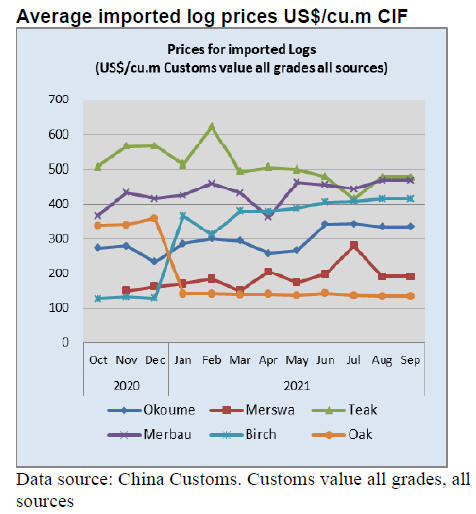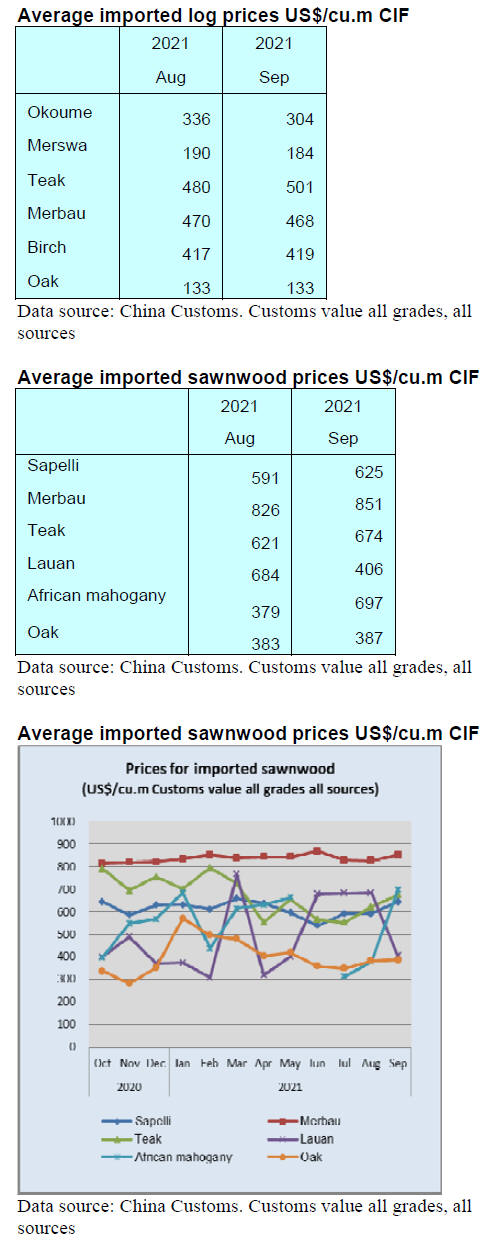US Dollar Exchange Rates of
25th
Oct
2021
China Yuan 6.3830
Report from China
Real estate development trends in first nine months of
2021
In a press release the National Bureau of Statistics has
reported that between January and September this year
investment in real estate increase of 8.8% it was around
15% higher than in the same period in 2019. The pace of
investment in housing has been steadily declining.

In the first nine months of this year investment in
real
estate in the eastern increase of 7.9%; the central region by
14.3%; the western region by 6.9% and investment in
northeast China increased 3.7%.
See:
http://www.stats.gov.cn/english/PressRelease/202110/t20211019_1823033.html
Property tax pilot scheme to be extended
China¡¯s legislative body has approved plans to expand a
property tax pilot project to more urban areas across the
country but the cities to which the pilot will be expanded
have not been announced. It is reported the pilot project
will be conducted over the next five years and levy taxes
on all residential and nonresidential properties in pilot
areas, excluding rural households, according to the report.
According to the decision the aims is to advance the
property tax legislation and reform in an active and
prudent way, guide the rational housing consumption and
the economical and intensive use of land resources and
facilitate the steady and sound development of the
country's property market,
See:
http://www.news.cn/english/2021-10/23/c_1310264479.htm
Substantial increases in wood panel production costs
Because of the government¡¯s power rationing policy
production in the woodbased panel sector and others is
being disrupted and output lost which has raised the cost
of production. The timber industry is concerned as it sees
energy cost rising. Coal prices continue to rise pushing up
power charges and this is translated into rising production
costs as output declines.
According to a recent survey in Dongguan City,
Guangdong Province it was founded that many enterprises
in the furniture and flooring sectors are experiencing rising
costs of production.
Dalingshan Town has more than 500 furniture and
supporting enterprises. Many enterprises have increased
the sales prices of their products by between 8 to 20%.
The cost increase is due to rising raw material inputs.
Prices for paint, wood and other raw materials have
increased 25% to 30% since 2020 and this is undermining
the profitability of the companies.
Local experts point out that the price increases are the
result of a combination of many factors among which the
shortage of imported raw materials caused by COVID-19
and the increase in shipping and transport costs.
China¡¯s wood product Standards
By the end of August this year China had released 273
standards on wood products including 140 national
standards and 133 industrial standards on timber for
construction products and sawnwood for structural use.
The Standard system is basically the same as that of the
international and developed countries. China has adopted
23 ISO international standards and foreign advanced
standards which cover 22% of the total national timber
standards.
The Standards such as the Names of Main Timbers in
China (GB/T 16734), Names of Main Imported Timbers in
China (GB/T 18513) and Chinese Redwood (GB/T 18107)
have been widely used and effectively promote the healthy
development of the timber trade.
In order to meet market requirements a number of
standards such as ¡®Rotary Veneer Log¡¯, ¡®Slice Veneer
Log¡¯ and ¡®Sawnwood for Instrument¡¯ have been revised
and have played a role in the realisation of an efficient and
regulated market.
¡®Green¡¯ wood industry
Yulin City was recently awarded the title of ¡®Capital of
China Green Wood Industry¡¯ by the China Wood
Protection Industry Association. A booming development
trend has been seen in the ¡®green¡¯ wood industry in Yulin
City, Guangxi Zhuang Autonomous Region especially in
the furniture sector. Yulin City deserves this title as
forestry resources are abundant with forest area of 830,000
hectares and a forest cover of 62%, wood production of
more than 10 million cubic metres which provides
adequate timber raw materials.
At present, there are 1,832 forest products enterprises in
Yulin City, including 275 plywood enterprises and 835
furniture enterprises. The output value of wood panel
furniture is nearly RMB20 billion in 2020.
Intelligent manufacturing and digital transformation for
building materials
Efforts are being made by Raw Materials Industry
Division under the Ministry of Industry and Information to
encourage development of intelligent manufacturing and
digital transformation for building materials.
The ¡®Green¡¯ Wood Panel Branch in the China Wood
Protection Industry Association (CWPIA) is collecting
examples of wood-based panel and wood home furnishing
intelligent manufacturing and digital transformation in
order to promote change across the wood-based panel and
wood home furnishing sectors.
Ultra-thin fibreboard arrives
The first ultra-thin fibreboard panels were successfully
rolled off the production line of the Shandong Xingang
Enterprise Group Limited Company mill.
This production demonstration plant for ultra-thin
fibreboard is located in Yitang Town, Lanshan District,
Linyi City of Shandong Province, ¡°the Capital of Wood
Industry¡± and extends over an area of nearly 10 hectares
with a total investment of RMB405 million. At full
capacity the mill can achieve an annual output of 180,000
cubic metres of ultra-thin fiberboard.
This project has adopted first-class international
equipment and technology and is one of the mills
producing the thinnest thickness and fastest production
speed in the market at present. Output includes 0.8-8.0mm
formaldehyde free, flame retardant and waterproof ultrathin
fibreboard that can be used as base for decorative
veneer. This thin board can also be used for packaging and
other enduses so has a broad market prospect.


|